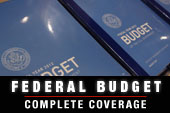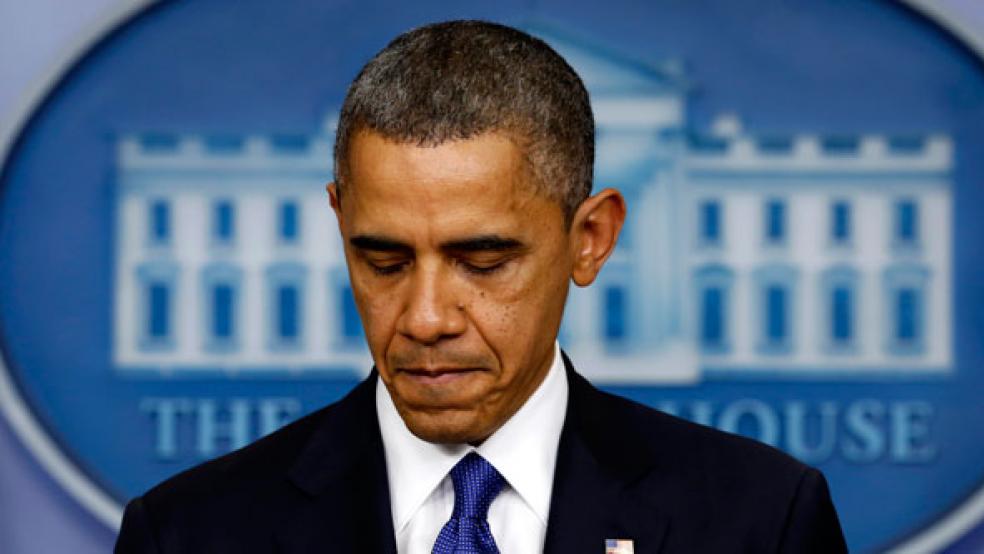
President Obama arrived in Washington vowing to make over the federal government. Last year he unveiled what seemed like a good idea for cracking down on government duplication and waste: Save taxpayers $3 billion over ten years by consolidating six trade and commerce agencies into one new department to make it easier for U.S. businesses to compete and export.
Obama’s scheme was to gradually eliminate 2,000 superfluous jobs by merging the Commerce Department’s core business related functions with five smaller agencies -- the Small Business Administration, the Office of the U.S. Trade Representative, the Export-Import Bank, the Overseas Private Investment Corporations and the Trade and Development Agency, which all engaged in overlapping activities. “No business or nonprofit leader would allow this kind of duplication or unnecessary complexity in their operations,” Obama told a gathering of small business owners at the White House in February 2012 while outlining his idea.
But in order to move those bureaucratic boxes around, the president needed the expressed permission of Congress, and that would not be easy. Lawmakers were empowered by the Constitution to create, rearrange or dismantle government agencies as they saw fit and many were unwilling to cede that power to the executive branch. Obama had only one way around that, which was to introduce what he called the Consolidating and Reforming Act of 2012, a bill that would allow his administration to draft a plan for streamlining and modernizing the government that couldn’t be altered by lawmakers but was subject to an up or down vote by the House and Senate – a power last held by President Ronald Reagan in the early 1980s.
The proposal was sponsored by Sen. Mark Warner, D-Va., and then independent senator Joseph Lieberman of Connecticut. Yet within a matter of months, the measure to greatly strengthen the chief executive’s hand had hit a wall, providing a cautionary tale of the limitations to government reform. While House Speaker John Boehner, R-Ohio, and other congressional leaders initially said the president’s proposal had “potential,” strong opposition from special interest groups and House and Senate committee chairmen with jurisdiction over commerce and trade conspired to bury the legislation.
Some in Congress – including House Ways and Means Committee Chairman Dave Camp, R-Mich., and Senate Finance Committee Chairman Max Baucus, D-Mont -- and major business groups including the U.S. Chamber of Commerce objected to folding the U.S. trade representative into a larger department and possibility dilute the trade rep’s authority. There were also more than two dozen House and Senate committees and subcommittees with jurisdiction over commerce, small businesses and foreign trade that stood to lose influence over the operations of those agencies if the president’s plan went through.
“What essentially happened was that . . . Congress had absolutely no interest in surrendering control, and there were so many committees and subcommittees with jurisdiction that in the end it just didn’t happen,” said Donald Kettl, dean of the University of Maryland’s School of Public Policy and a former consultant to the House Budget Committee and a handful of federal agencies. “And the administration decided it didn’t want to invest all of its chips in making this happen when it was having an impossible time getting the budget passed. So it simply withered away.”
“Without that authority, you couldn’t collapse the USTR and the SBA into a new department,” said Kenneth Baer, a associate director of the Office of Management and Budget. “You couldn’t move a NOAA [National Oceanic and Atmospheric Administration] out of Commerce and put it into Interior, all of which were proposed. You couldn’t do any of that. You need Congress to do it. But to move those proposals forward in the regular process is next to impossible.”
THE BELTWAY BRICK WALL
Just about every administration in the last half century has tried to streamline or increase the efficiency of the federal government, including President Ronald Reagan’s inaugural pledge to “curb the size and influence of the federal establishment” and the Clinton administration’s efforts to “reinvent government” so that it “works better, costs less, and gets results Americans care about.” The Sept. 11, 2001 terrorist attacks on New York and Washington forced a massive reorganization of security agencies, leading to the creation of the Department of Homeland Security in 2003, an unwieldy structure that brought 22 disparate agencies under one command.
Obama took office in 2009 vowing to make it “cool again” to work for the federal government, but also to make government more cost- efficient and responsive by implementing modern personnel and business tactics borrowed from the private sector. He recruited Jeffrey Zients, a young, successful private sector personnel consultant, as the government’s first ever performance officer within OMB. Zients’ mandate was to speed up the notoriously slow hiring process, create a new system for evaluating the performance of federal workers and consolidating and upgrading the government’s computer operations to close “IT gap” with the private sector. Obama later promoted Zients to acting OMB director.
NO-BID, NO DEAL
In each of his first three budgets Obama identified, on average, more than 150 terminations, reductions and savings totaling nearly $25 billion annually, most of which were implemented by Congress. Baer said the administration made “huge progress” in reforming the federal procurement process to reduce the number of costly no-bid contracts, and to save money in purchasing information technology, along with dozens of other reforms that get little public attention. “It’s not sexy,” he said. “And it doesn’t solve the fiscal problem, but I think it leads to better and more efficient government.”
But the administration’s record in this area is far from spotless. The Government Accountability Office was mandated by Congress several years ago to identify areas of potential duplication, overlap and fragmentation in the federal government and to identify opportunities to achieve hundreds of billions of dollars in cost savings and enhanced revenues. The GAO in March 2011 identified 81 areas spanning the government with a total of 176 actions that the Congress and the executive branch could take to reduce or eliminate unnecessary duplication overlap and fragmentation or achieve other potential financial benefits.
As of February 10, 2012, GAO found that only four of the 81 areas identified had been fully addressed by Congress or the administration – including overlapping activities to promote domestic ethanol production, Justice Department investigations of explosives, State Department arms control and non-proliferation activities and Internal Revenue Service identification of non-resident aliens. Meanwhile, 60 of the GAO’s recommendation or findings had been only partially addressed and nothing had been done on 17 other recommendations.
“It does take time to implement some of these things,” said Zina Merritt, GAO’s director of defense capabilities. “It cannot happen overnight . . . Sometimes it does take that sustained effort because there are a lot of things in play when you have to implement.”
But while the Obama administration can rightly point to many reforms achieved solely through administrative action, some government experts say that fundamental change in government can only be achieved through a massive overhaul and recasting of the federal government – not unlike the highly successful government reorganization achieved by the bipartisan Hoover Commission during the mid to late 1940s.
During congressional testimony last year on government reorganization, Patricia Dalton, GAO’s chief operating officer noted, “The federal government faces an array of challenges and opportunities to enhance performance, ensure accountability, and position the nation for the future.”
“A number of overarching trends, such as fiscal sustainability and debt challenges…underscore the need for a fundamental reconsideration of the role, operations, and structure of the federal government for the 21st century.”
But achieving government reorganization on such a grand scale would be very difficult under the best of political circumstances, and would require an element of trust and cooperation between lawmakers and the chief executive. That would appear to be virtually impossible now for Obama and a politically divided Congress to muster. At a time when the president and Republican leaders are battling over sequestration and other fiscal issues, it seems unlikely that GOP lawmakers would agree to turn over the keys of government reform to the president.
“What the executive branch is and how it is structured and who reports to whom is largely the product of congressional action,” said Kettl. “And for better or worse that’s the way our framers created the animal. So when the president steps in and says that he wants to try to do something on the executive branch side he needs to get congressional approval.”
Robert Goldenkoff, a senior GAO official specializing in human capital, argues that even without the additional organizational authority, a president can accomplish a considerable amount in trying to change the face of the government.
“Obviously for a lot of fundamental reforms Congress does need to step in because there are statutory limitations where the agency just doesn’t have the authority,” Goldenkoff told The Fiscal Times yesterday. “But at least within the area of federal personnel it has been a collaboration and things work better that way--where Congress provides the oversight and the administration takes the initiative. And on top of that we have seen that a lot of the change that has taken place has come as the result of the flexibility that agencies already have to make reforms.”





